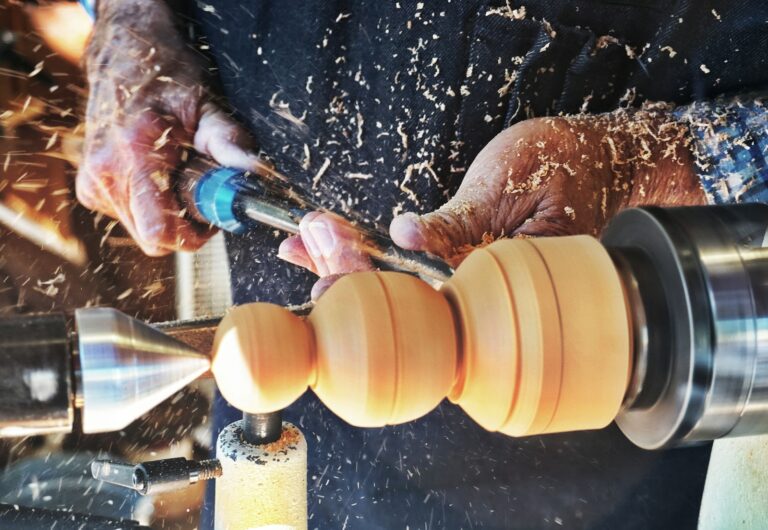Have you ever set up a stall at a farmers’ market, only to be disappointed by the lack of sales? It can be disheartening to put in all that effort and time, only to have your products go unsold. But don’t worry, there are things you can do to turn things around.
As someone who has experienced this firsthand, I know how frustrating it can be. But I also know that there are steps you can take to improve your chances of making sales. Whether it’s tweaking your presentation, adjusting your prices, or improving your product descriptions, there are always ways to improve your chances of success.
So if you’re feeling discouraged by lackluster sales at your local farmers’ market, don’t give up just yet. In this article, I’ll share Farmers’ Market Sales Tips and strategies for what to do when your stuff doesn’t sell at a market, so you can turn things around and start making more sales.
Why Customers Buy
When it comes to selling in a market, understanding why customers buy is crucial to your success. Here are a few reasons why people make purchases:
- To reduce hassle – that’s why TV remotes are in every home now.
- To gain information – the more informed we are, the better we can perform.
- To be entertained – we all want to be entertained, even if it is just by the stallholder!
- To solve a problem – if you can offer a solution to a problem, customers will be more likely to buy from you.
- To feel good – sometimes people make purchases simply because it makes them feel good.
Knowing why customers buy can help you tailor your product and your sales pitch to their needs. If you can offer a solution to a problem or make them feel good, you’ll be more likely to make a sale. It’s also important to remember that customers are looking for value for their money. If they don’t see the value in what you’re offering, they won’t buy it.
Another important factor to consider is the customer’s experience. If they have a positive experience with you and your product, they’re more likely to become repeat customers or recommend you to their friends and family. This is why it’s important to offer excellent customer service and make sure your product is of high quality.

Reasons for Low Sales
As a seller, it can be frustrating when your products don’t sell as well as you had hoped at a market. However, it’s important not to get discouraged and instead try to identify the reasons why your sales may be low. Here are some common reasons:
Presentation
One reason your products may not be selling could be due to their presentation. How your products are displayed can make a huge difference in whether or not customers are drawn to them. Make sure your booth is clean and organized, and that your products are displayed in an appealing way. Consider using props or other eye-catching displays to draw attention to your products.
Too Niche
Another reason your products may not be selling could be that they are too niche. While it’s great to have a unique product, if it’s too specific, it may not appeal to a broad enough audience. Consider expanding your product line or finding ways to make your niche product more broadly appealing.
Changing Trends
It’s also possible that your products are not selling because they are no longer on-trend. Keep up with current trends and make sure that your products are still relevant. If not, consider updating your products or finding ways to make them more current.
Branding is Off
Your branding could also be a reason for low sales. Make sure that your branding is consistent and appealing to your target audience. Your branding should accurately reflect your products and the message you want to convey. Consider getting feedback from customers or friends to see if your branding is hitting the mark.
High Price
If your products are priced too high, customers may be hesitant to make a purchase. Consider adjusting your prices to be more in line with the market, or finding ways to add value to your products to justify a higher price point.
Competition
Competition can also be a reason for low sales. Make sure you are aware of your competition and find ways to differentiate yourself. Consider offering unique products or services, or finding ways to improve your customer experience.
Wrong Season
Finally, it’s possible that your products are not selling because they are out of season. Make sure that your products are appropriate for the time of year and the location of the market. Consider adjusting your product line or finding ways to make your products more seasonally appropriate.

Evaluate Your Products
Assess Market Demand
When your products aren’t selling at a market, it’s essential to assess the demand for them. It’s possible that your products aren’t appealing to the market you’re selling them in. Conduct market research to understand what your target audience wants and needs. Look at existing competition and current buying trends for your proposed product. This research will help you get a better grasp of product viability because it forces you to look at existing competition, current buying trends for your proposed product, and much more.
Additionally, consider talking to your customers to get their feedback. Sometimes, the best way to understand why your products aren’t selling is to ask the people who aren’t buying them. Collect feedback from customers who have visited your stall and those who haven’t. This feedback can help you identify areas where you can improve your products or marketing strategy.
Check Your Pricing
Pricing is a crucial factor that can affect the sales of your products. If your products are priced too high, customers may be reluctant to buy them. On the other hand, if your products are priced too low, customers may assume that they are of low quality. Therefore, it’s essential to find the right balance when pricing your products.
Conduct market research to understand the average price range for products similar to yours. Consider the cost of production, packaging, and other related expenses when setting your prices. You may also want to consider offering discounts or promotions to attract customers to your stall.
Consider Product Presentation
Your stall presentation is the face of your business, and so are you, or your sales representatives when you are not there. How do you look? Make sure your products are presented in an attractive and eye-catching way. Use clear signage and product labels to make it easy for customers to understand what you’re selling. If possible, provide product samples or demonstrations to help customers understand the value of your products.
Additionally, consider the layout of your stall. Make sure your products are arranged in an organized and easy-to-navigate way. Consider using tables, shelves, or other display fixtures to showcase your products. Use lighting and other decorative elements to create an inviting and visually appealing atmosphere.

Reassess Your Target Market
When your stuff doesn’t sell at a market, it’s time to reassess your target market. Maybe you assumed that your product would appeal to a certain demographic, but it turns out that you were wrong. Here are some steps you can take to reassess your target market:
Identify Your Target Market
First, you need to identify your target market. Who are you trying to sell to? What are their characteristics? Are they male or female? What age range are they in? What are their interests? Once you have a clear understanding of your target market, you can start to adjust your marketing strategy.
Adjust Your Marketing Strategy
If your stuff isn’t selling, it’s possible that your marketing strategy is off. Maybe you’re not reaching your target market in the right way. Here are some things to consider:
- Are you advertising in the right places? For example, if you’re trying to sell to teenagers, you might want to advertise on social media platforms like TikTok and Instagram.
- Are you using the right language? Make sure that your marketing materials use language that will appeal to your target market.
- Are you using the right images? The images you use in your marketing materials should also appeal to your target market.
Consider a Different Market
If you’ve tried adjusting your marketing strategy and you still can’t seem to sell your stuff, it might be time to consider a different market. Maybe your product would appeal to a different demographic than you originally thought. Here are some things to consider:
| Demographic | Characteristics |
|---|---|
| Age 50+ | Interested in health and wellness products |
| Parents | Interested in products for their children |
| College Students | Interested in affordable and trendy products |
By considering a different market, you might be able to find success with your product. Just make sure that you do your research to ensure that the new market is a good fit for your product.
Explore Other Sales Channels
When your stuff doesn’t sell at a market, it can be frustrating. But don’t give up hope just yet! There are other sales channels that you can explore to get your products in front of more potential customers. Here are a few options to consider:
Online Marketplaces
Online marketplaces like Amazon, eBay, and Etsy can be a great way to reach a wider audience. These platforms have millions of users who are actively searching for products to buy. By listing your items on these sites, you can tap into that existing customer base.
Before you start selling on an online marketplace, be sure to do your research. Each platform has its own rules and fees, so make sure you understand what you’re getting into. You’ll also need to create high-quality product listings that stand out from the competition.
Social Media Platforms
Social media can be a powerful tool for promoting your products and reaching new customers. Platforms like Facebook, Instagram, and Twitter allow you to showcase your items and connect with potential buyers.
To make the most of social media, you’ll need to create engaging content that resonates with your target audience. Share high-quality photos and videos of your products, and be sure to interact with your followers to build relationships and foster a sense of community.
Consignment Shops
Consignment shops are another option to consider if you’re struggling to sell your items at a market. These stores allow you to display your products in a physical location, which can be more appealing to some customers.
Before you approach a consignment shop, be sure to do your research. Look for stores that specialize in your type of products, and make sure you understand their terms and fees. You’ll also need to create attractive displays that showcase your items in the best possible light.
Exploring other sales channels can be a great way to boost your sales and reach new customers. By diversifying your approach, you can increase your chances of success and build a loyal customer base.
Liquidate Your Inventory
When you have inventory that just won’t sell, it’s time to consider liquidating it. Here are some options to consider:
Offer Discounts
The most obvious way to get rid of your unsold items is to offer discounts. You can offer a percentage off the original price, or even a buy-one-get-one-free deal. Make sure to advertise your sale on social media and any other platforms you use to promote your business.
If you have a lot of items that aren’t selling, you might want to consider hosting a clearance sale. This can be a great way to get rid of a large amount of inventory quickly.
Bundle Products
If you have items that aren’t selling on their own, try bundling them with other products. For example, if you have a lot of unsold candles, try bundling them with a candle holder. This can make the product more appealing to customers and increase your chances of making a sale.
You can also bundle products that are related to each other. For example, if you sell handmade soap, you can bundle it with a loofah or a soap dish.
Donate or Dispose of Unsold Items
If you’ve tried everything and you still can’t sell your inventory, it might be time to consider donating or disposing of the unsold items.
Donating your items to a local charity can be a great way to give back to your community and get a tax deduction at the same time. Just make sure to research the charity first to make sure they accept the items you’re donating.
If you can’t donate your items, you might need to dispose of them. This can be a last resort, but it’s better than letting the items take up space in your inventory. Make sure to dispose of the items properly and in an environmentally friendly way.
Conclusion
Overall, not selling at a market can be disappointing, but it’s not the end of the world. It’s important to take a step back, reevaluate your products and their branding, and make changes accordingly. Remember, it’s not a reflection of you as a person or your skills as a creator.
One of the key takeaways is to make sure you have a strong brand identity that attracts customers and keeps them coming back. This can be achieved through effective brandings, such as having a memorable logo, consistent messaging, and a clear value proposition.
Another important factor is pricing. Make sure your products are priced competitively and reflect their value. You can also consider offering discounts or bundle deals to entice customers to make a purchase.
When all else fails, it’s important to know when to cut your losses and move on. Donating or gifting unsold items can help clear space and provide a sense of closure, allowing you to focus on creating new and improved products.
Remember, selling at a market is a learning experience. Take note of what worked and what didn’t, and use this knowledge to improve your products and strategies for future markets. With time and effort, and following these Farmers’ Market Sales Tips, you can turn a disappointing market experience into a valuable lesson and a successful business venture.











